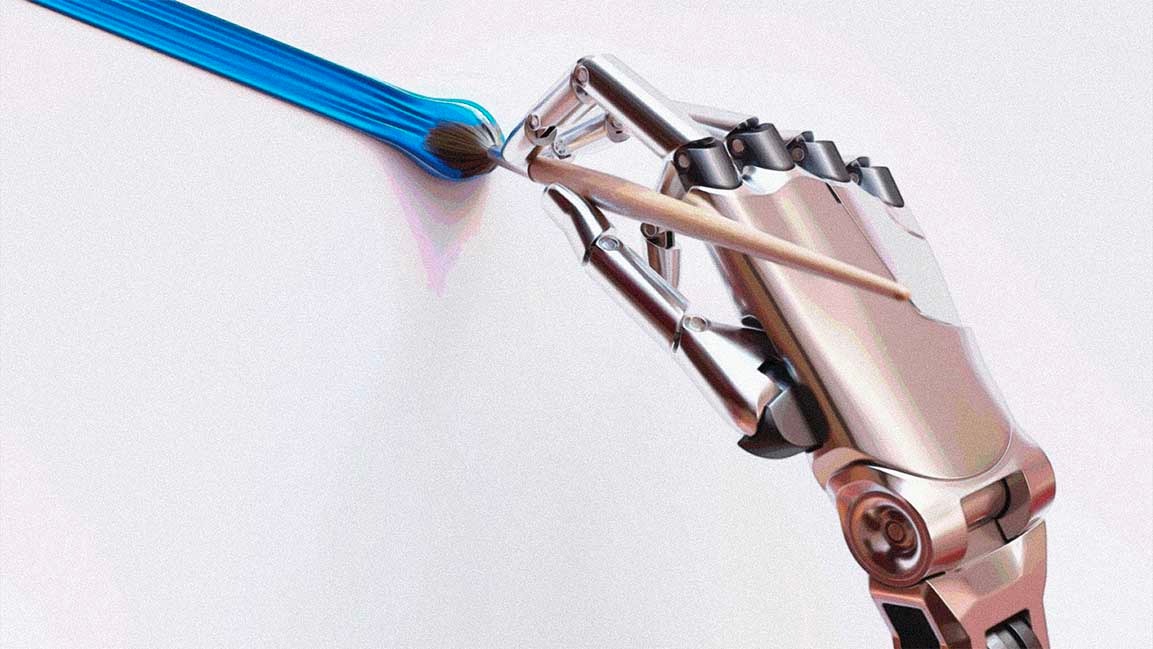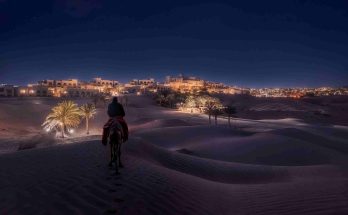- | 9:00 am
The risk of generative AI transforming the creative work in the Middle East
As AI tech advancements arise, with Adobe joining the fray, experts say it’s vital to keep the conversation going about the implications of AI in the art industry.

From removing stray shadows to adding yellow lines to the pavement or even a shirt over someone, with a simple text prompt, the possibilities with AI-powered tools are endless.
Available in beta, Generative Fill uses Adobe’s AI image generator Firefly as an intuitive Photoshop tool. It can extend images, also known as outpainting, vertically or horizontally and generate various backgrounds. It allows users to remove or add generated objects using simple text prompts. The tool uses advanced deep learning algorithms to match an image’s perspective, lighting, and style automatically. It’s now possible to generate the rest of a photo — all in a few seconds.
So, what does this mean for artists, creators, art collectors and investors?
“It’s a big, massive deal,” says Beno Saradzic, a UAE-based architectural photographer and time-lapse cinematographer.
“Spend five minutes using the new set of tools Adobe added to the latest version of Photoshop, and you’ll immediately understand that you’re witnessing the most profound change in how images are made, manipulated, and created.”
Saradzic points out that the technology powering the new intuitive tool isn’t new, as programs such as Stable Diffusion, an open-source AI designed to generate images from natural text, and Midjourney, a generative AI program that uses Discord bot commands, was all the rave a few months ago. However, such tools were only accessible using Discord, thereby remaining on the fringes. On the other hand, Adobe Photoshop was a major player in the image editing industry – it’s no surprise that it received instant popularity once it released its AI tool.
“What Firefly does better than the other two is its seamless integration with Photoshop. Any experienced Adobe user will remain in a familiar realm. There’s virtually no learning curve. Firefly’s interface is minimalistic, intuitive, and it blends seamlessly with the rest of Adobe’s ecosystem,” says Saradzic.
One of the main concerns with generative AI content is that it may produce false or misleading content, harming the credibility of an entity and disrupting trust. Compared to other generative AI players such as Midjourney, Stability AI, and DALL-E, Adobe claims that its AI is only trained on content that the company can use – such as Adobe Stock images, openly licensed content, and content without copyright restrictions.
It also supports Content Credentials, an industrywide system launched a few years ago that attaches attribution data to images before sharing them online, informing viewers if the content was created or edited using AI. With the initiative, they aim to promote accountability, responsibility, and transparency in generative AI.
WHAT SHOULD ARTISTS AND CREATORS CONSIDER?
For artists and creators, it offers a mixed bag of opportunities and challenges.
Adonis Zaki, Chief Information Officer at Kama Capital, notes, “As AI technology becomes more sophisticated, the line between human-made and AI-generated content could blur, leading to debates about the value and ownership of AI-generated art.”
As a tool, it’s designed to cater to artists’ creative needs and workflows, enhancing the ability to expedite and enhance the creative process, says Zaki. However, it can also bring about concerns about the originality and authenticity of the artwork, and the potential misuse of the technology.
Zaki points out challenges such as ethical concerns, copyright issues, and the need for clear guidelines and standards around the use of AI in art creation. “As generative AI becomes more prevalent, it’s important for the art industry to develop a consensus on these issues to ensure fair use and respect for artists’ rights.”
Saradzic also worries that it will cheapen the art. “Many [artists] will be replaced by their clients who started using AI tools, or by their competitors who implemented AI into their creative process and production pipeline. This is already happening in the industry, [and] at a much faster rate than anyone anticipated.”
OPPORTUNITIES AND CHALLENGES
For some, AI tech has inspired them to create their tools.
Mohamed H. Elhoseiny, Assistant Professor of Computer Science at the Visual Computing Center at KAUST, and his team have released MiniGPT-4, an open-sourced model performing complex vision-language tasks like GPT-4. Referencing an image, the AI tool can write poems for photos and pinpoint problems and offer solutions, among other things.
🚀 Excited to share MiniGPT-4, an open-sourced model performing complex vision-language tasks like GPT-4!
✍️ Write poems for photos
🔍 Pinpoint problems & offers solutions
🌐 Draft ➡️ Website
and more!🔗 @Gradio Demo & Project: https://t.co/m3D0sZ6pzO pic.twitter.com/eee9qrgBv6
— Deyao Zhu (@tikgiau) April 17, 2023
Though Elhoseiny admits that its capabilities are still weaker than GPT-4, its distinct abilities are exciting. “Visually informed language models open a new route to generalized visual intelligence. By providing these models with visual input, they can already solve tasks such as recognizing cats or dogs and answering questions about a car brand.”
He adds, “Moreover, they can be further developed to solve more tasks on demand, such as interactively generating a painting or designing a new chair of your favorite style to be placed in your living room. This is what we are working towards.”
For investors, generative AI offers tremendous opportunities for established companies and startups, says Hassan Awada, Associate Managing Director at Kroll. “By leveraging its ability to analyze large amounts of data and automate complex processes, this technology can help mature companies unlock new growth opportunities. For startups, it can enable them to explore and disrupt traditional sectors.”
“As we embrace these advancements, it’s vital to keep the conversation going about the implications of AI in art and design. The future of creativity is here, and it’s generative,” Zaki says.
Saradzic concludes, “If we lose our ability to produce art, the most human traits, the expression of pain, tears, struggle, joy, dreams, and hopes, what will become of us? I hope we will find a way to work better and more creatively with AI and never lose ourselves to it. We need to remain vigilant and never lose sight of it.”
Will AI replace artists or designers? Only time will tell. Either way, the future is exciting.







































